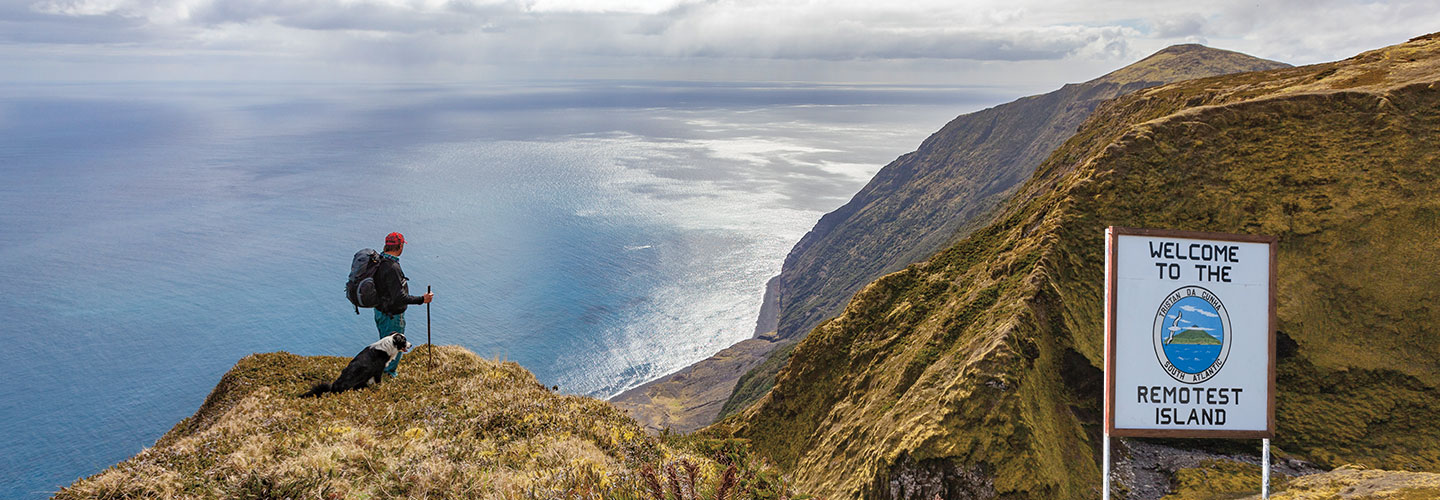Suppose you could view the Atlantic Ocean from high in the sky. Look closely. You might see a tiny speck in the middle of the water. It’s an island called Tristan da Cunha. Zoom in and you’ll see about 270 people, 300 cows, 500 sheep, and a whole lot of penguins.
If you watch for a year, you won’t see a single plane arrive. There’s no airport on Tristan. Every month or so, a boat will bring visitors—but not many. The boat will also bring mail and supplies.
Now scan the ocean. Eventually, you’ll find another town. It’s on an island 1,514 miles away. If you could walk there, it would take you almost two months. That makes the people on Tristan the most isolated people on Earth. And that’s exactly the way they like it.
What if you could see the Atlantic Ocean from the sky? You might see a tiny speck in the middle. It’s an island called Tristan da Cunha. It has about 270 people, 300 cows, and 500 sheep. It has a lot of penguins too.
No planes land on the island. There’s no airport there. Sometimes a boat brings a few visitors. The boat brings mail and supplies too.
Now scan the ocean. Find the closest town. It’s on an island 1,514 miles away. If you could walk there, it would take almost two months. The people on Tristan are the most isolated people on Earth. And they like it that way.
Imagine viewing the Atlantic Ocean from high in the sky. Look closely, and you might glimpse a tiny speck in the middle of the water. It’s an island called Tristan da Cunha. Zoom in and you’ll see about 270 people, 300 cows, 500 sheep, and many penguins.
If you watch for a year, you won’t witness the arrival of even one airplane—there’s no airport on Tristan. Every month or so, a boat will bring visitors (but not many), along with mail and supplies.
Now scan the ocean, and eventually you’ll locate another town. It’s on an island 1,514 miles away. If you could walk there, it would take you almost two months. That makes the people on Tristan the most isolated people on Earth—and that’s exactly the way they like it.

